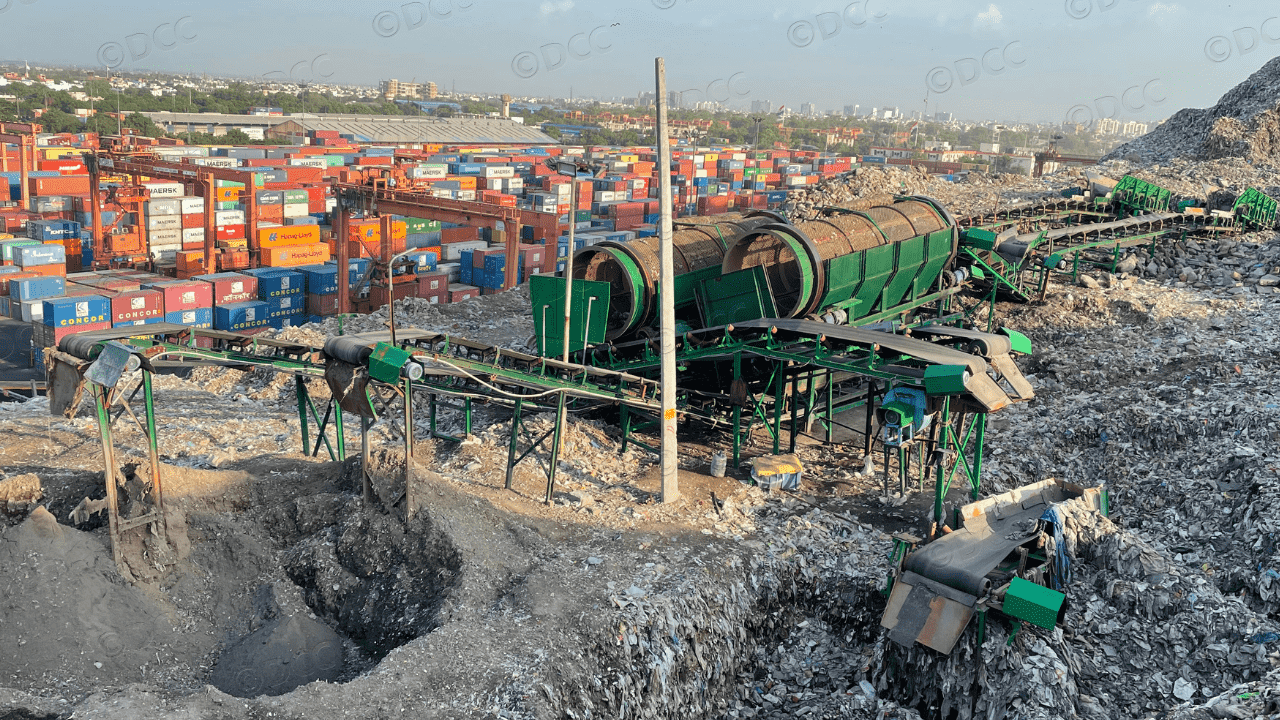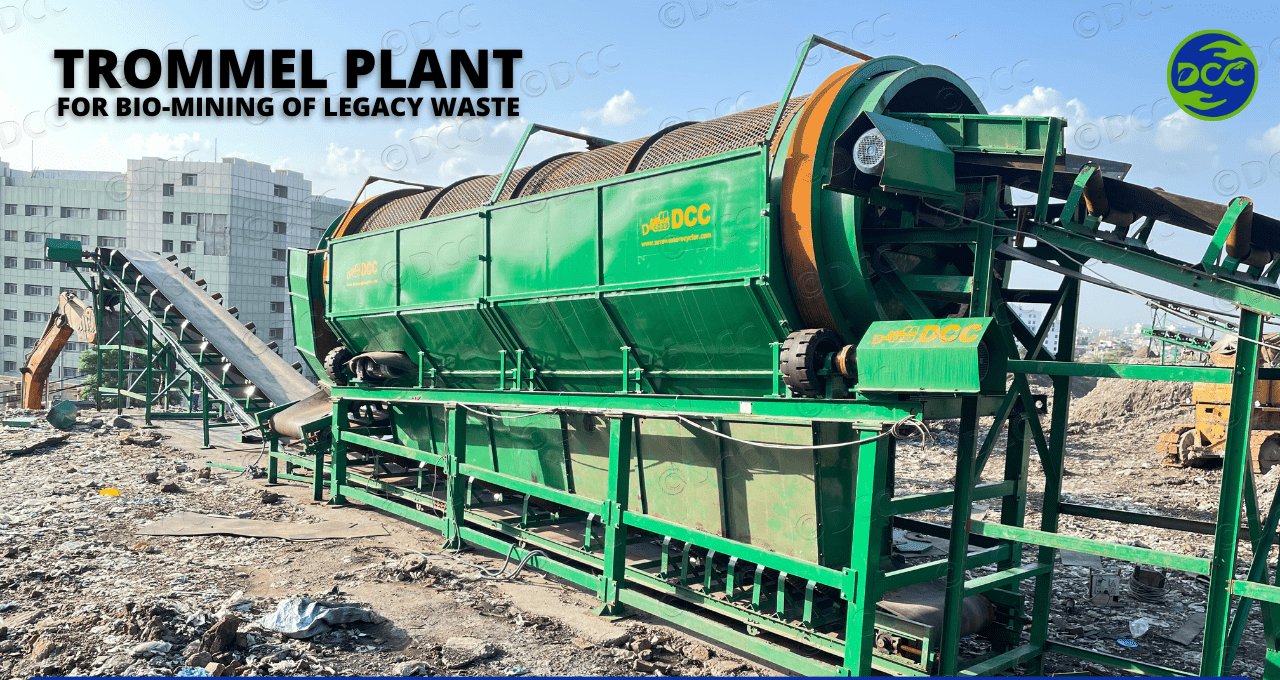
What is Legacy Waste?
Legacy waste refers to waste that has accumulated over an extended period, typically in landfills or abandoned sites. This waste consists of various materials, including organic materials, plastics(LDP/HDP), metals, and hazardous substances, which have been buried and left unmanaged for years or even decades. Legacy waste poses significant environmental and health hazards, requiring systematic and sustainable management solutions.

The Challenges of Legacy Waste
1. Environmental Impact: Legacy waste or landfill sites can cause severe soil and groundwater contaminated due to the leaching of harmful chemicals. Decomposing organic waste generates methane, a potent greenhouse gas contributing to climate change. Which is the major reason of fire at dumpsite and cause air pollution.
2. Health Risks: Prolonged exposure to legacy waste can lead to serious health issues for nearby communities, including respiratory problems, skin diseases, and other illnesses caused by toxic Gasses.
3. Land Scarcity: Accumulated waste occupies valuable land that could otherwise be used for productive purposes such as agriculture, housing, or recreation.
4. Aesthetic and Odor Issues: Unmanaged waste sites are often unsightly and emit foul odors, reducing the quality of life for nearby residents.
5. Leachate: Leachate is polluted water that forms when rainwater filters through waste in a landfill. It can pick up harmful substances from the waste, making it important to manage properly to protect the environment.


Solutions for Managing Legacy Waste
1. Waste Segregation and Sorting: The first step in managing legacy waste is to segregate and sort the waste materials. This involves separating recyclables, organics, and hazardous substances to facilitate appropriate treatment and disposal.
2. Bioremediation: This process uses microorganisms to break down and neutralize hazardous substances in the waste, reducing environmental contamination.
3. Landfill Mining: This involves excavating and processing waste from old landfills to recover valuable materials and reduce the volume of waste that needs to be managed.
4. Waste-to-Energy: Converting waste materials into energy through processes like co-processing, gasification, and pyrolysis can help reduce waste volumes while generating renewable energy.
5. Sanitary Landfilling: For waste that cannot be recycled or converted into energy, sanitary landfilling with proper liners and leachate collection treatment systems can prevent further environmental contamination.
6. Rehabilitation of Waste Sites: After removing or stabilizing the waste, rehabilitating the site by covering it with soil, planting vegetation, and monitoring for any remaining contamination can restore the land for safe use.


Case Studies and Success Stories
- The Municipal Corporation of Delhi (MCD) launched a project to reclaim the Okhla landfill site, collaborating with Daya Charan & Company. Over a three-year period, the initiative focused on legacy waste segregation, processing 5,50,000 MT of waste, and significantly reducing the landfill’s footprint.
- The Municipal Corporation initiated a project to reclaim the Gurugram landfill site, collaborating with Daya Charan & Company on the Bhandwari landfill in Haryana from 2020 to 2022. The project focused on legacy waste segregation, processing 5,27,165 MT of waste, and reducing the overall size of the landfill.

What Bio Mining Process is All About?
Bio-mining of Legacy waste, also known as bioremediation or bioprocessing, is the process of using biological organisms, such as bacteria, fungi, or plants, to extract valuable metals or minerals from waste materials, particularly municipal solid waste or industrial waste. This method leverages the natural metabolic processes of these organisms to break down the waste and recover useful materials.
What We Do?
Daya charan & Company stands at the forefront among biomining and Solid Waste Management companies, excelling as a manufacturer of Legacy Waste segregation plants, legacy waste processing, waste Land reclamation and recycling solutions, waste segregation plants, automatic waste segregation machines manufacturers, and other MSW equipment in India. Our efforts align seamlessly with the “SWACHH BHARAT MISSION” initiated by the Honorable Prime Minister of India, striving to achieve a garbage-free environment through our innovative waste management and recycling methodologies.
We take pride in being a pioneering force, providing compost bioremediation solutions that effectively address the accumulation of urban legacy solid wastes. Our focus remains on transforming these wastes for better and future usage, contributing significantly to environmental sustainability and the mission for cleaner surroundings.
Classification of Legacy Waste
1. Organic Waste:
• Food Waste: Leftovers, fruit and vegetable peels, expired food items.
• Horticulture waste : Grass clippings, leaves, branches, garden trimmings.
• Paper waste: Newspaper, cardboard, paper packaging, tissues.
2. Inorganic Waste:
• Plastics: Bottles, packaging materials, bags, containers.
• Metals: Cans, foil, metal scraps, household waste.
• Glass: Bottles, jars, broken glass items.
• Textiles: Clothes, fabrics, upholstery & cotton rags
3. Hazardous Waste:
• Household Chemicals: Cleaning agents, pesticides, batteries.
• Waste from small sceale industries : sludge, paint, liners etc.
4. Construction and Demolition Waste:
• Debris: Concrete, bricks, tiles, plaster, steel, glass
• Wood: Lumber, plywood, wooden fixtures.

